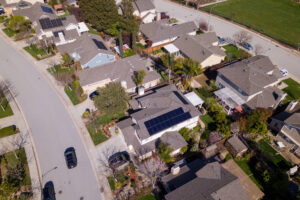
Building Code Adoption for a Sustainable Future: Overcoming Barriers and Proposing Recommendations
Collaboration between jurisdictions and a shared focus on safety will pave the way for a greener, safer and more resilient built environment.
There is a broad range of building code adoption across the U.S. – some jurisdictions have adopted the most recent International Codes® (I-Codes) (and even adopted voluntary stretch codes with more stringent standards), while other jurisdictions have adopted homegrown codes, and some have no formal building department at all.
However, with cities being responsible for nearly 70 percent of global greenhouse gas emissions, building code adoption and implementation has become crucial to limit global warming to the goal of two degrees Celsius set by the Paris Climate Agreement.

Investigating How Building Code Adoption Impacts Sustainability
This spring the International Code Council supported the research capstone project for Arizona State University Master of Public Policy Student, Daiva Scovil, who was investigating how building code adoption impacts sustainability.
Scovil’s study used qualitative research methods to address the primary barriers to updating and adopting sustainability-focused I-Codes, such as the International Green Construction Code® (IgCC) and the International Energy Conservation Code® (IECC). She then used her findings to provide recommendations that facilitate the adoption of the latest energy-efficient and green building codes that serve as a powerful tool to promote energy efficiency and sustainable practices.
The following is a summary of Scovil’s findings from her study, including the three major thematic barriers to building code adoption that were identified and the three corresponding comprehensive policy recommendations provided to address these barriers.
Research Findings: Barriers to Building Code Adoption
- Concerns About Code Applicability to New Building Stock:
- Retrofitting the existing building stock is essential for improving energy efficiency and meeting climate goals.
- Outcome-based codes, tied to energy performance, can incentivize retro-commissioning of buildings.
- Clear and persuasive messaging about the long lifecycle and potential energy savings of new buildings constructed to meet sustainable building code requirements can foster stakeholder support.
- Addressing Cost Concerns and Promoting Low-Cost Upgrades:
- The perceived cost increase associated with adopting and updating building codes is a major barrier.
- Internal costs for building departments, including code purchases, staff training and policy implementation, need to be carefully managed.
- Educating stakeholders about the low costs of upgrades and the long-term cost savings associated with energy-efficient buildings is crucial.
- Advancements in technology have made green building materials more affordable, debunking the misconception of excessive costs.
- Overcoming Political Pushback through Safety-Focused Messaging:
- Political ideology and competing stakeholder interests often impede building code adoption.
- Opposition arises from developers, unions and politicians concerned about private sector constraints.
- Framing building code updates as a safety issue can garner greater support.
- Emphasizing the role of building departments in ensuring public safety and well-being is critical.
- Collaboration between jurisdictions and coalition-building efforts can help overcome political resistance and secure additional resources.
Comprehensive Policy Recommendations:
- Encourage Retrofitting and Communicate Lifecycle Benefits:
- Develop policies and programs to promote retrofitting of the existing building stock.
- Implement outcome-based codes to drive retro-commissioning based on energy performance.
- Communicate the long-term benefits and energy savings associated with the new building stock.
- Foster Collaboration and Educate about Cost Reduction:
- Encourage regional partnerships to alleviate internal costs for building departments.
- Educate developers and stakeholders about the cost-effectiveness of energy-efficient upgrades and the long-term savings they offer.
- Highlight technological advancements that have made green building materials more affordable.
- Frame Building Code Updates as Safety Measures:
- Emphasize the fundamental role of building codes in ensuring public safety and mitigating risks.
- Present building code updates as essential safety measures rather than solely sustainability-focused initiatives.
- Showcase the broader benefits, such as improved health and reduced risks, resulting from code updates.
Working Toward a More Sustainable Future
By encouraging retrofitting, addressing cost concerns through education, and framing building code updates as safety imperatives, sustainability professionals can drive the widespread adoption and implementation of energy-efficient and green building codes.

Collaboration between jurisdictions and a shared focus on safety will pave the way for a greener, safer and more resilient built environment.
Click here to learn more about the International Green Construction Code, and click here to learn more about the International Energy Conservation Code.






